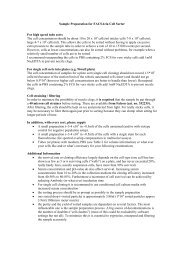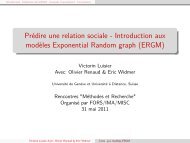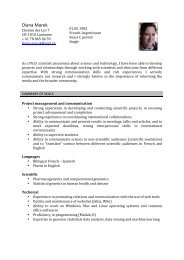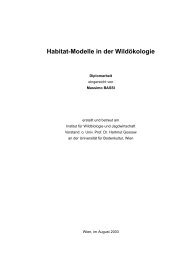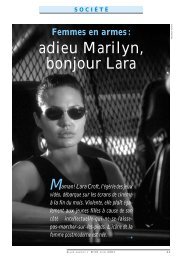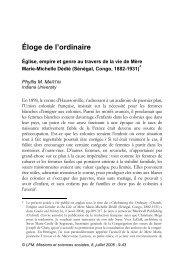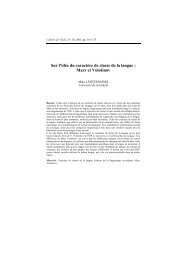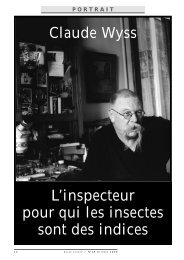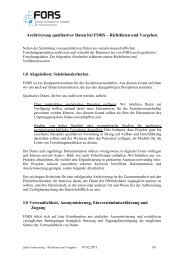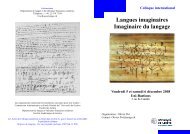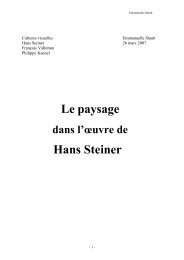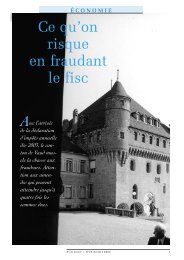conference programme book - European Survey Research ...
conference programme book - European Survey Research ...
conference programme book - European Survey Research ...
You also want an ePaper? Increase the reach of your titles
YUMPU automatically turns print PDFs into web optimized ePapers that Google loves.
40 TUESDAY 19 JULY1.16.1 Cognive Tesng of Web Quesonnaires with Children and Young People: Assessments of VisualDesign and Technical FeatureJ. D’Ardenne 11 Naonal Centre for Social <strong>Research</strong> - NatCen, United KingdomThere is a growing demand for research conducted with children and young people, this is driven by the factthat proxy informaon given by parents or teachers on children’s behalf is inaccurate and that children areincreasingly seen as actors in their own right (Sco; 1997). There is some evidence that young people prefercomputer based quesonnaires to paper ones (Mangunkusomo et al, 2005) and that computerised surveysconducted in schools are more cost efficient than paper based equivalents (Van Haum and de Leeuw, 1999).Despite this lile advice is available on how to design self-compleon quesonnaires, computerised or otherwise,for children and young people. This presentaon will share results from the cognive tesng of theAcve Young People <strong>Survey</strong> (AYPS); a web survey conducted in primary and secondary schools across Wales...1.16.2 Kids’ Life and Times: Using the internet to collect survey data from childrenK. Lloyd 11 Queen’s University Belfast, United KingdomKids’ Life and Times (KLT) is an annual survey of 10 and 11 year old children in Northern Ireland which beganin 2008. KLT is innovave in two main ways. Firstly, it invites all Primary 7-aged children in Northern Ireland(approximately 24,000) to parcipate. Secondly, it is an animated online survey carried out in school. As KLTis now entering its fourth year, the presentaon will reflect on its successes and failures. It will discuss thelessons learned for researchers interested in using this mode of administraon to collect data from children,as well as the impact of including standardised quesonnaires designed for pen and paper within an onlineanimated survey of this type. It will also provide a live demonstraon of the online version of the survey anddiscuss its development in the pilot year in 2008 through to the preparaon and delivery of the 2011 survey...1.16.3 Tesng quesons on a large-scale schools omnibus panel for the fih wave of the Millennium CohortStudyL. Calderwood 2 , L. Clements 1 , K. Smith 2 , E. Wallace 11 Ipsos MORI, United Kingdom; 2 Centre for Longitudinal Studies, Instute of Educaon, University of London,United KingdomIt is standard pracce on most large-scale quantave surveys to carry out field pilots to evaluate new data colleconinstruments. These are oen supplemented by cognive interviewing, parcularly for new quesons.While these queson tesng methods are undoubtedly beneficial, they are oen relavely small scale andlack the sample sizes sufficient to carry out quantave evaluaons of quesons or to test different versionsof quesons.1.16.4 Interviewing NLSY79 Children and Young Adults: Design Elements and Response in a LongitudinalIntercohort <strong>Survey</strong>P. Baker 11 Ohio State University, United StatesThis paper reports on the design and content of the longitudinal surveys of the Children of the Naonal Longitudinal<strong>Survey</strong>s of Youth/1979 cohort (NLSY79). Elements of the NLSY79 Child surveys have been adapted andincorporated into other major U.S. surveys as well as naonal child cohort studies in Canada, Great Britain,mainland Europe, East Asia, and the Middle East, offering opportunies for comparave analyses. The paperdetails the informaon available over the life course for the NLSY79 children, delineang the modificaons inmodes of administraon as well as the content of quesons asked as children age up into adolescence and



